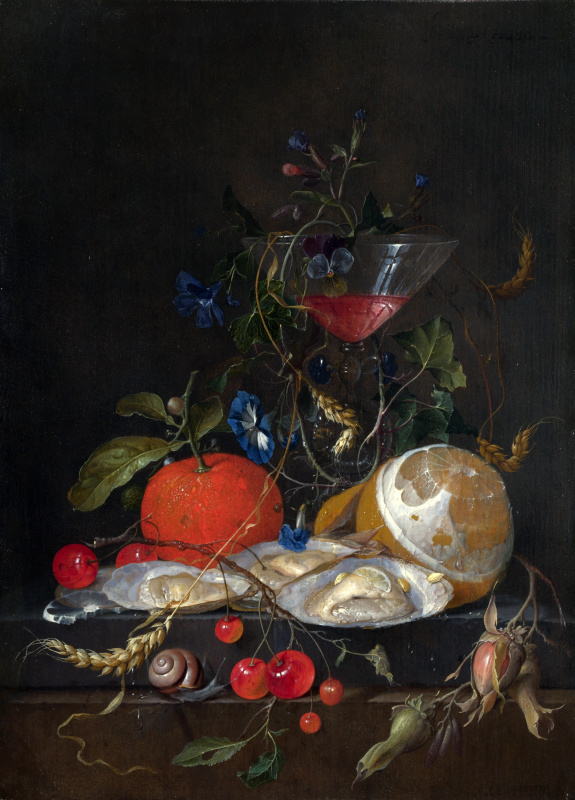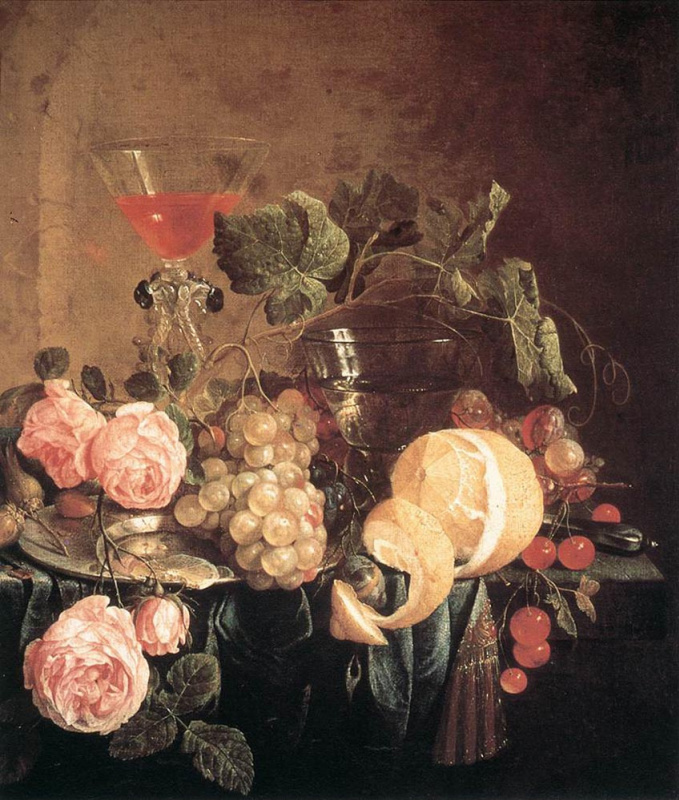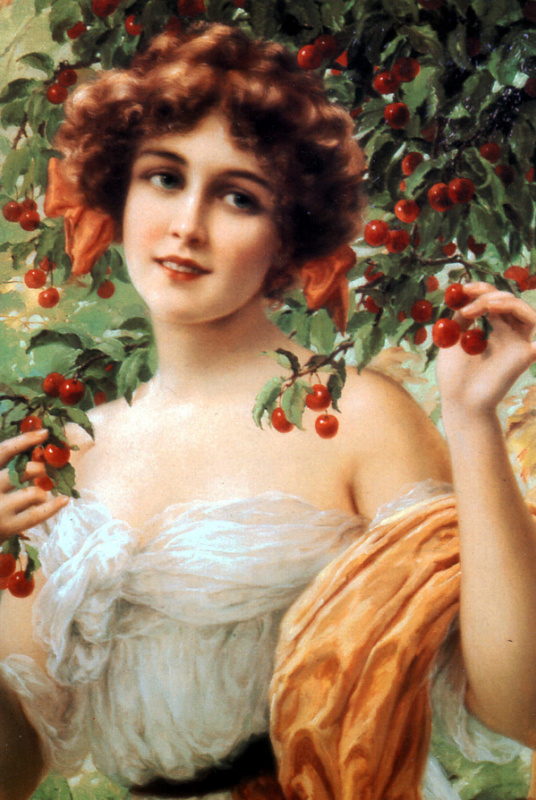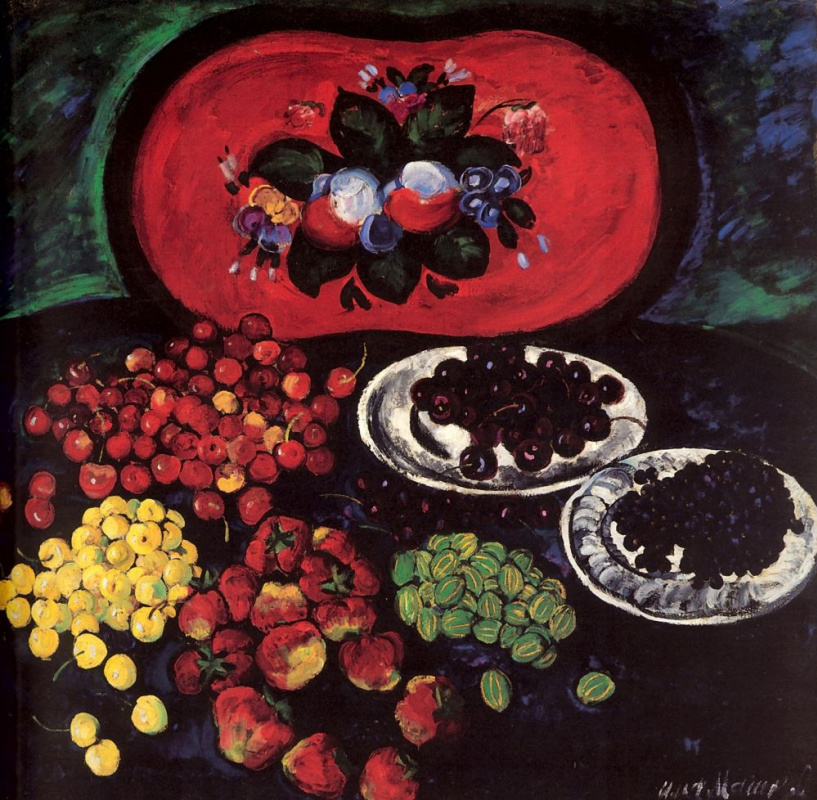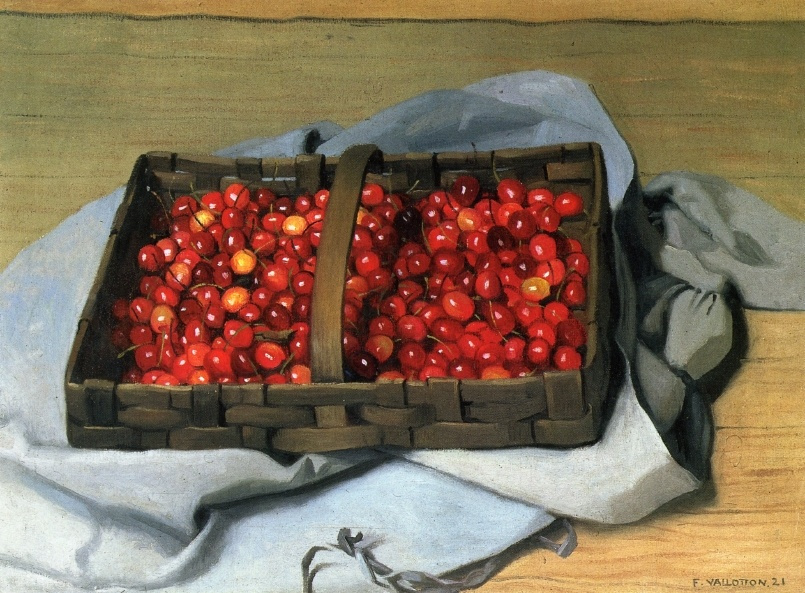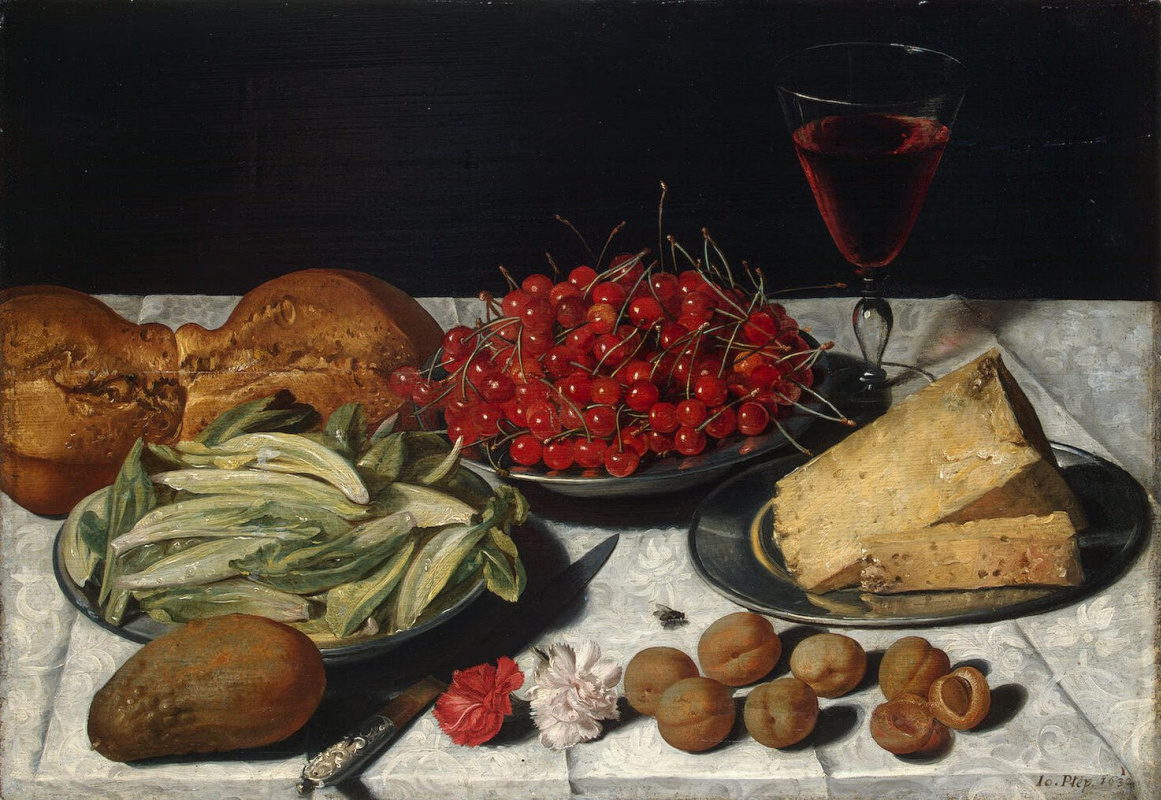When gathering the juicy vitamin collection bellow, we certainly could not limit ourselves to a dozen of cherry group portraits, which should be admired first of all. Looking at them, we would try to find out why, other than for artists' and viewers' pleasure, the painters depict cherries on canvases. That’s why we added a handful of pictures, in case you’re getting a taste for it.

Secret signs
For the most realistic and impeccable cherries you should certainly look through Dutch still lifes. There you can find them composing a table scene as well as a floral bucket. Still lifes by the old masters are full of suggestions. These artists did not simply draw the berries. They decorated almost every other canvas with a cherry, as if it were a cake. It’s all because cherry in their avian language is a symbol of kindness and soft nature. I wonder, at whom do they hint? I guess at themselves, don’t they?
From playfulness to sexuality
Collectors cherry
1768
It happens sometimes that there is no need for an interpreter from Dutch art to a middlebrow language. When a young lady deals with cherries — whether they are in her hands, in a hem, or in her hair — it is clear that in the eyes of a male she looks as appetizing as these berries.
A girl from Under the Cherry Tree by Émile Vernon is as if rendering the girl from D.H. Lawrence’s poem Cherry Robbers,
Against the haystack a girl stands laughing at me,
Cherries hung round her ears.
Offers me her scarlet fruit…
Let’s say sincerely, with raspberries or currants, she would not be as sexual as with cherries.
A girl from Under the Cherry Tree by Émile Vernon is as if rendering the girl from D.H. Lawrence’s poem Cherry Robbers,
Against the haystack a girl stands laughing at me,
Cherries hung round her ears.
Offers me her scarlet fruit…
Let’s say sincerely, with raspberries or currants, she would not be as sexual as with cherries.
Stop the blueprint thinking
Cherries in a silver bowl
XVII century
You’ll fail to count how many times male artists added piquancy to their female figures, providing them with cherries. But sometimes it happens the other way round: a woman does not adorn herself with such a very feminine allurement as cherries, but depicts them on the canvas by herself. Are you amazed, looking at the still life above? Surely you are! Its author Fede Galizia was an Italian Renaissance
painter, a pioneer of the still life genre in late 16th century.
Divine cherries
Madonna with cherries
1518, 81.6×100.2 cm
Well, now we figured out that cherries provide allurement, a game, and even something frivolous. But what are these tempting berries for in the biblical scenes of Titian and Carracci? They symbolize the maidenhead of the Virgin Mary and purity of the Baby Christ. Cherry is also called a "paradise berry," although botanists would have frown at this name, for it is considered to be a fruit. Two more symbolic meanings are attributed to it: tenderness and sad prediction — cherry is the blood of Christ to shed.
By the way, cherry (it is cherry, not crimson or scarlet) mantle of the Virgin Mary on the Orthodox icons has got its color because it refers to the royal clothes. So, you can easily remember: the lady in the cherry is the Holy Virgin.
By the way, cherry (it is cherry, not crimson or scarlet) mantle of the Virgin Mary on the Orthodox icons has got its color because it refers to the royal clothes. So, you can easily remember: the lady in the cherry is the Holy Virgin.
Madonna with cherries
120×98 cm
Cherry Queen
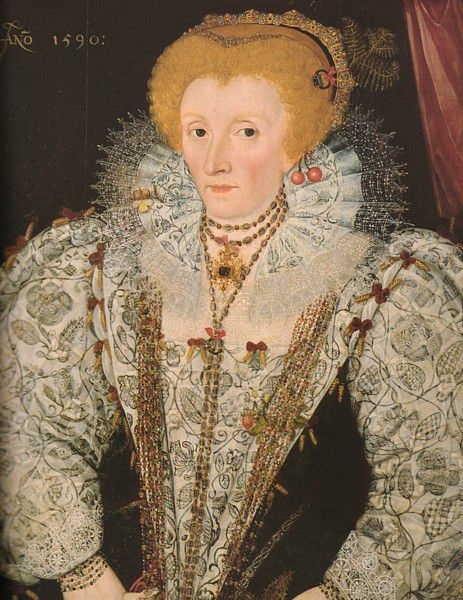
English artists often had to write another virgin lady — Queen Elizabeth I. Why try to be clever with choosing a posture and a glance for her to depict this biographical fact of the Virgin Queen if you can just stick a pair of cherries in a hairstyle of the spinster? As you can see it on this not attributed portrait of the 16th century.
Taste of the comforting childhood
The boy with cherries
1859, 65×55 cm
Looking at this happy boy’s face and seeing how he holds his cherries, you understand that they are his real treasure. Maybe he has not tasted anything yummier. On the canvas the artist depicted his assistant, a 15-year-old Alexander, who was hired to wash the brushes and to run errands. Well, here Mane uses cherries to practice with composition, color, and textures. Just look how the glossy berries and the rough wall contrast with each other!
Ripe cherry
1879, 134.5×89 cm
This beauty is a four-year-old girl Edie Ramage. In this gown she arrived at the ball. Her wealthy uncle was not just touched, but commissioned pre-Raphaelite John Everett Millais to make a portrait of her. The painting was reproduced massively and was very popular in England.
All the time on canvases, children with cherries have an invariable expression on their faces: life is a bowl of cherries! As time goes by, very few people let themselves make such statements, and their teeth put on edge even to think of cherries. Childhood is when the trees were tall and cherries were sweet!
All the time on canvases, children with cherries have an invariable expression on their faces: life is a bowl of cherries! As time goes by, very few people let themselves make such statements, and their teeth put on edge even to think of cherries. Childhood is when the trees were tall and cherries were sweet!
Cherries according to Freud
Still life with plate of cherries
1887, 50×60 cm
The father of psychoanalysis would have said that sometimes cherries are just cherries. This is a table to share a food, and these are the cherries to eat. Well, and to admire, too.
Bon Appetit!
Bon Appetit!
Written by Natalia Kanduarova.








